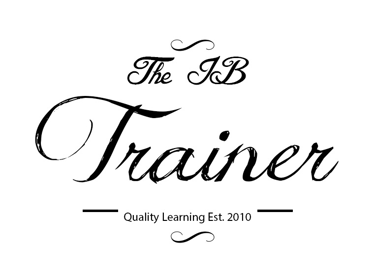Free Markets Inequality and the Circular Flow
Explore why free markets lead to inequality and how the circular flow model explains imbalances in income and wealth. IB HL Economics made simple.
IB ECONOMICS HLIB ECONOMICS MACROECONOMICSIB ECONOMICS
Lawrence Robert
4/21/20253 min read


Why Free Markets Can’t Guarantee Fairness: Inequality and the Circular Flow
This is the typical Business example teachers provide in secondary education: two kids start a lemonade stand. One has a shiny table, Instagram-savvy parents, and a prime corner spot. The other has a cardboard sign and is tucked behind a hedge.
Both are “in the market” - but guess who makes more?
Markets may be great at efficiency, but they’re not built for fairness. This post dives into why the free market can’t achieve equity - and how it all ties into that familiar but often misunderstood model: the circular flow of income.
IB Economics Free Markets and Inequality: Built-In Bias?
In a free-market economy, income and wealth are distributed based on the rewards to the factors of production:
Labour → wages
Land → rent
Capital → interest
Enterprise → profit
Sounds fair enough. But the problem? Not everyone has equal access to these factors of production.
Some people are born with land. Others inherit shares. Some face systemic barriers - like discrimination, poor schooling, or unstable healthcare - that stop them from accessing high-paying jobs. That’s where inequality begins.
Income vs Wealth in your IB Economics Course: Same, But Different
Income = regular flow (like a salary or freelance payments)
Wealth = stock of assets (like property, stocks, savings)
You can have low income but high wealth (retired property owner), or high income but low wealth (tech bro spending it all on crypto, social life, and craft beer).
Wealth inequality tends to be worse - because it’s often passed down from generation to generation, not earnt.
Global Inequality: Country vs Country
Income and wealth gaps exist within countries and between them.
Compare:
A tech consultant in San Francisco earning $10,000 / month
A rural farmer in Malawi earning $100 / month
They’re not just playing different games - they’re on different planets. Free markets don’t fix this. In fact, they often emphasize these differences.
IB Economics the Circular Flow Model: Inequality in Motion
Let’s recap:
In a closed economy, households provide labour and capital to firms. Firms pay wages and profits, and households spend income on goods and services.
Simple, balanced and tidy.
But reality? We’re in an open economy with:
Injections: investment (I), government spending (G), exports (X)
Withdrawals: savings (S), taxes (T), imports (M)
And here’s where the inequality gears start turning.
Imbalances in the Circular Flow Model for your IB Economics Course
Imbalance 1: Savings and Investment
Those with higher incomes tend to save more - and these savings are used by banks to fund business investments.
So if you earn a lot, you’re helping firms grow. If you earn less, you’re not saving, and you’re not part of that growth engine. The divide grows.
Also: not everyone has equal access to bank loans or start-up capital. Social, legal, and cultural factors all influence this.
Imbalance 2: Tax and Government Spending
Some governments run progressive tax systems - higher earners pay more, and those taxes are used for public services or welfare.
Others use flat tax systems - same rate for all, which often benefits the rich.
If taxation doesn’t redistribute wealth, inequality deepens.
Imbalance 3: Imports vs Exports
Countries that export more (X > M) build wealth and jobs. Countries that import more (M > X) leak income abroad, leading to unemployment and poverty at home.
This global imbalance helps explain why wealthier nations tend to stay rich while developing economies struggle.
IB Economics What Happens When Withdrawals > Injections?
When savings, taxes, and imports exceed investments, government spending, and exports, the circular flow shrinks:
National income falls
Employment drops
Poverty and inequality rise
This can trigger recessions, which hit low-income households the hardest.
For access to all IB Economics exam practice questions, model answers, IB Economics complete diagrams together with full explanations, and detailed assessment criteria, explore the Complete IB Economics Course:
IB Economics Can Markets Ever Achieve Equity?
Short answer: No, not without help.
Markets are designed to allocate resources efficiently, not fairly. Left alone, they reward:
Those who already have capital
Those born into opportunity
Those who face fewer systemic barriers
That’s why governments step in - with taxes, welfare, education, infrastructure, and redistribution policies.
Every episode of Pint-Sized links back to what matters most for your IB Economics course:
Understanding key IB Economics concepts
Applying them in real-world IB Economics contexts
Building IB Economics course confidence without drowning in dry theory.
Subscribe for free to exclusive episodes designed to boost your IB Economics grades and confidence:
Final Thought for your IB Economics Course: Is Inequality Inevitable?
Some level of inequality is normal in market economies. But excessive inequality is inefficient - it:
Lowers demand (poor people don’t spend much)
Increases crime and unrest
Limits long-term economic growth
Wastes resources and talent that never had a chance
So the goal isn’t total equality - but greater equity: giving everyone a fairer shot.
Next time you hear someone say, “The market will sort it out,” just smile politely and ask, “Cool. And who’s got the capital to be a market player?”
Stay well,
IB Complete Support Courses, a new generation of affordable support materials directed at IB students seeking grades 6 or 7.
© Theibtrainer.com 2012-2025. All rights reserved.
